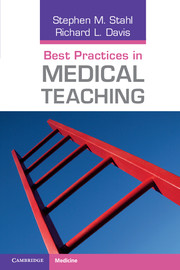Book contents
- Frontmatter
- Contents
- Preface
- About the authors
- Foreword
- Acknowledgments
- Introduction
- 1 Applying the principles of adult education to the designing of medical presentations
- 2 Using audience learning psychology to advantage in designing and delivering medical presentations
- 3 Executing the principles of adult learning in medical presentations
- 4 Measuring outcomes and ensuring success
- 5 Using interval learning in a comprehensive medical educational program
- References
- Progress check answer keys
- Progress check answer sheets
- Index
Introduction
Published online by Cambridge University Press: 05 August 2011
- Frontmatter
- Contents
- Preface
- About the authors
- Foreword
- Acknowledgments
- Introduction
- 1 Applying the principles of adult education to the designing of medical presentations
- 2 Using audience learning psychology to advantage in designing and delivering medical presentations
- 3 Executing the principles of adult learning in medical presentations
- 4 Measuring outcomes and ensuring success
- 5 Using interval learning in a comprehensive medical educational program
- References
- Progress check answer keys
- Progress check answer sheets
- Index
Summary
Medical education is a lifelong process. There is too much information and not enough time. Often, the response to this continuous explosion of knowledge is to try to shoehorn the maximum amount of content into every minute of every presentation and into every corner of every figure and every page. This attention to subject matter content is understandable but can often be self-defeating. It can even lead to inadvertent “audience abuse.” That is, more content can actually lead to less learning if the content is made available but is not well designed. The point is not to present information but to get learners to remember and use it.
This book will consider whether the focus of medical education should be the medical content, the medical educator who does the presenting, or the learner. The perspective here is that the focus of medical education should be the learner and that the content should be structured and executed in a manner that facilitates learning instead of inhibiting it. However, the current system of medical education is often deficient in that it provides its instructors with only some of the skill set necessary to deliver the medical education needed. That is, plenty of attention is given to “what is said,” but often little consideration is given to “how it is said.” Evolving principles from communications science now inform us that such an approach can needlessly compromise the potential benefit of any educational effort for those it is intended to inform.
- Type
- Chapter
- Information
- Best Practices in Medical Teaching , pp. 1 - 2Publisher: Cambridge University PressPrint publication year: 2011

